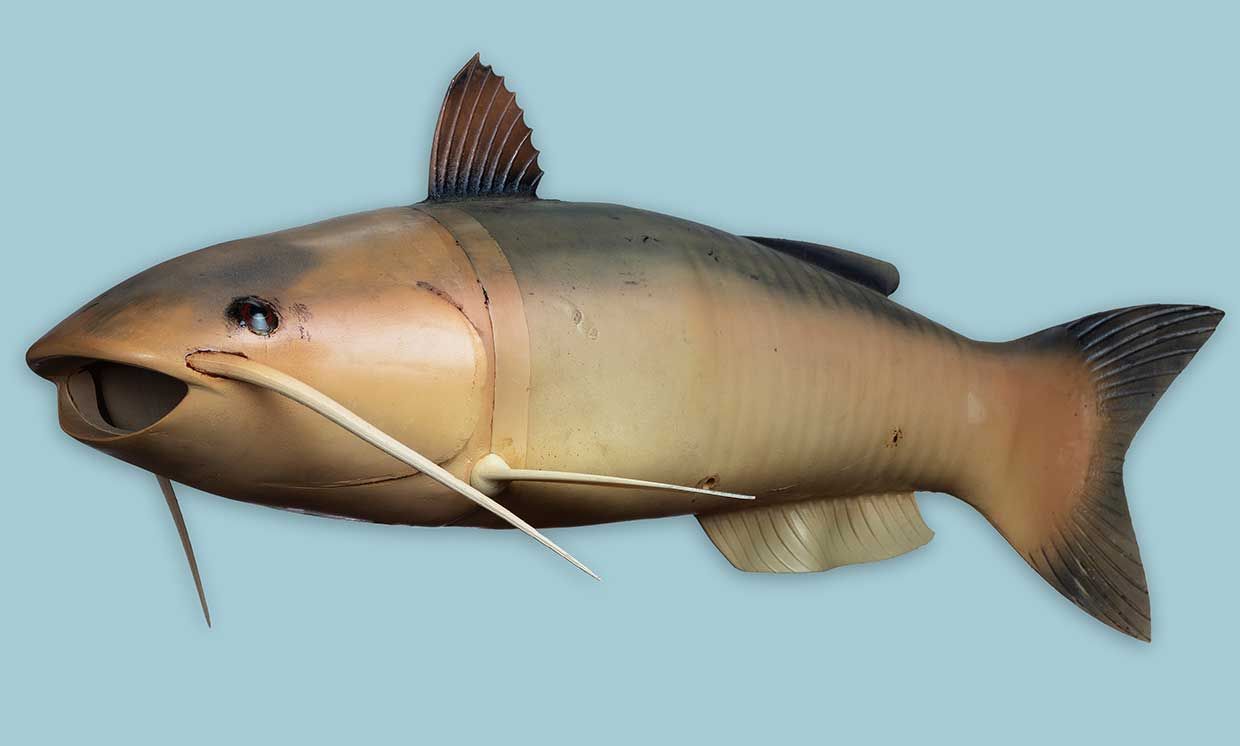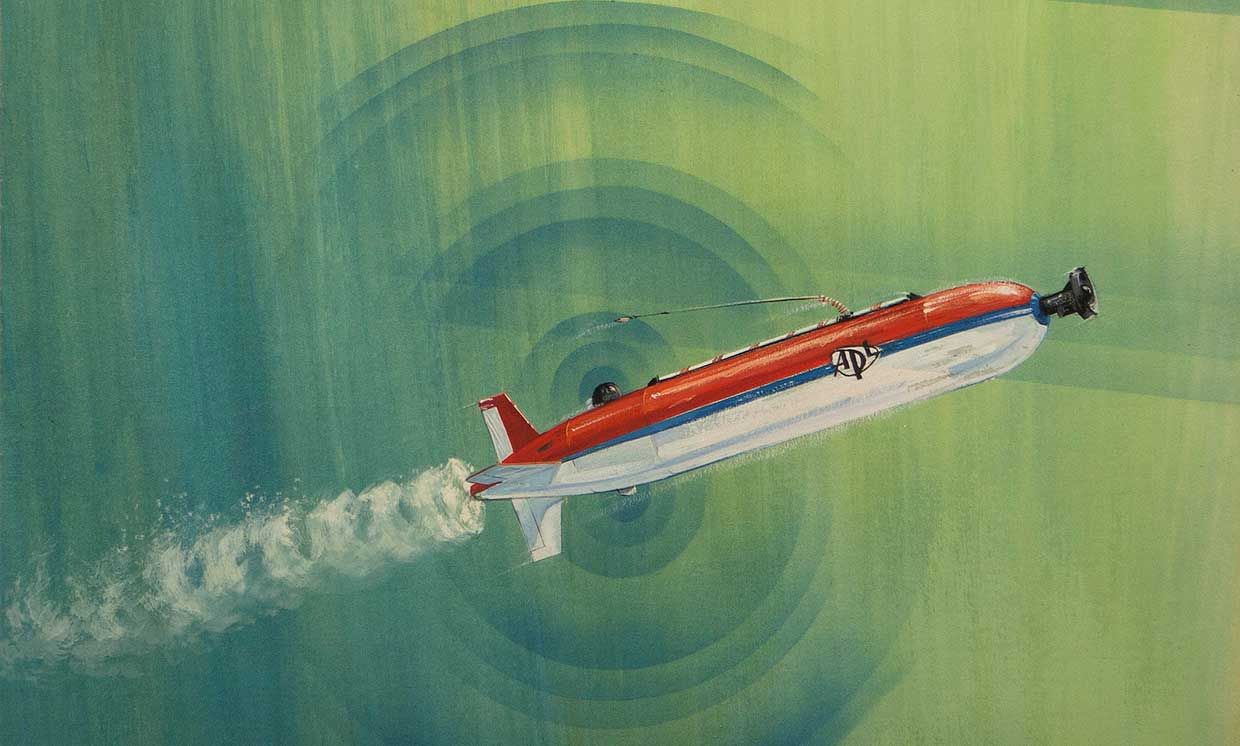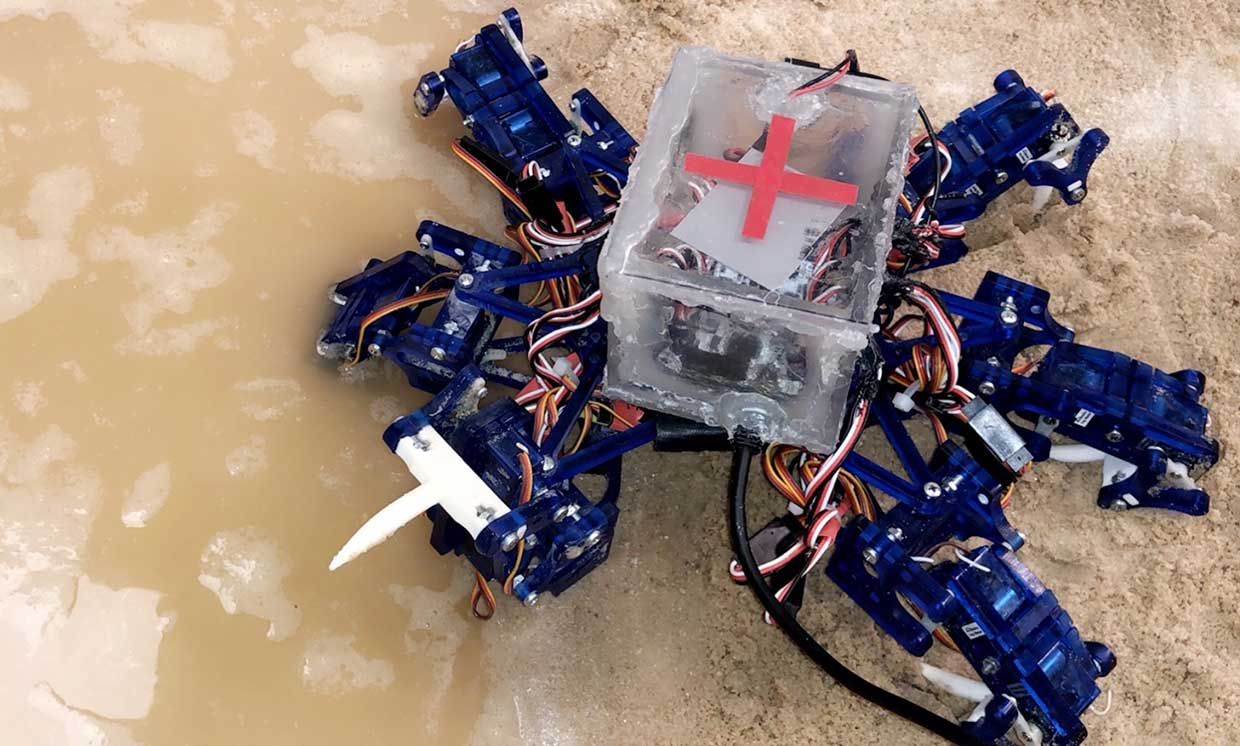
#438779 Meet Catfish Charlie, the CIA’s ... CIA roboticists designed Catfish Charlie to take water samples undetected. Why they wanted a spy fish for such a purpose remains classified. In 1961, Tom Rogers of the Leo Burnett Agency created Charlie the Tuna, a jive-talking cartoon mascot and spokesfish for the StarKist brand. The popular ad campaign ran for several decades, and its catchphrase “Sorry, Charlie” quickly hooked itself in the American lexicon. When the CIA’s Office of Advanced Technologies and Programs started conducting some fish-focused research in the 1990s, Charlie must have seemed like the perfect code name. Except that the CIA’s Charlie was a catfish. And it was a robot. More precisely, Charlie was an unmanned underwater vehicle (UUV) designed to surreptitiously collect water samples. Its handler controlled the fish via a line-of-sight radio handset. Not much has been revealed about the fish’s construction except that its body contained a pressure hull, ballast system, and communications system, while its tail housed the propulsion. At 61 centimeters long, Charlie wouldn’t set any biggest-fish records. (Some species of catfish can grow to 2 meters.) Whether Charlie reeled in any useful intel is unknown, as details of its missions are still classified. For exploring watery environments, nothing beats a robotThe CIA was far from alone in its pursuit of UUVs nor was it the first agency to do so. In the United States, such research began in earnest in the 1950s, with the U.S. Navy’s funding of technology for deep-sea rescue and salvage operations. Other projects looked at sea drones for surveillance and scientific data collection. Aaron Marburg, a principal electrical and computer engineer who works on UUVs at the University of Washington’s Applied Physics Laboratory, notes that the world’s oceans are largely off-limits to crewed vessels. “The nature of the oceans is that we can only go there with robots,” he told me in a recent Zoom call. To explore those uncharted regions, he said, “we are forced to solve the technical problems and make the robots work.”  One of the earliest UUVs happens to sit in the hall outside Marburg’s office: the Self-Propelled Underwater Research Vehicle, or SPURV, developed at the applied physics lab beginning in the late ’50s. SPURV’s original purpose was to gather data on the physical properties of the sea, in particular temperature and sound velocity. Unlike Charlie, with its fishy exterior, SPURV had a utilitarian torpedo shape that was more in line with its mission. Just over 3 meters long, it could dive to 3,600 meters, had a top speed of 2.5 m/s, and operated for 5.5 hours on a battery pack. Data was recorded to magnetic tape and later transferred to a photosensitive paper strip recorder or other computer-compatible media and then plotted using an IBM 1130. Over time, SPURV’s instrumentation grew more capable, and the scope of the project expanded. In one study, for example, SPURV carried a fluorometer to measure the dispersion of dye in the water, to support wake studies. The project was so successful that additional SPURVs were developed, eventually completing nearly 400 missions by the time it ended in 1979. Working on underwater robots, Marburg says, means balancing technical risks and mission objectives against constraints on funding and other resources. Support for purely speculative research in this area is rare. The goal, then, is to build UUVs that are simple, effective, and reliable. “No one wants to write a report to their funders saying, ‘Sorry, the batteries died, and we lost our million-dollar robot fish in a current,’ ” Marburg says. A robot fish called SoFiSince SPURV, there have been many other unmanned underwater vehicles, of various shapes and sizes and for various missions, developed in the United States and elsewhere. UUVs and their autonomous cousins, AUVs, are now routinely used for scientific research, education, and surveillance. At least a few of these robots have been fish-inspired. In the mid-1990s, for instance, engineers at MIT worked on a RoboTuna, also nicknamed Charlie. Modeled loosely on a blue-fin tuna, it had a propulsion system that mimicked the tail fin of a real fish. This was a big departure from the screws or propellers used on UUVs like SPURV. But this Charlie never swam on its own; it was always tethered to a bank of instruments. The MIT group’s next effort, a RoboPike called Wanda, overcame this limitation and swam freely, but never learned to avoid running into the sides of its tank. Fast-forward 25 years, and a team from MIT’s Computer Science and Artificial Intelligence Laboratory (CSAIL) unveiled SoFi, a decidedly more fishy robot designed to swim next to real fish without disturbing them. Controlled by a retrofitted Super Nintendo handset, SoFi could dive more than 15 meters, control its own buoyancy, and swim around for up to 40 minutes between battery charges. Noting that SoFi’s creators tested their robot fish in the gorgeous waters off Fiji, IEEE Spectrum’s Evan Ackerman noted, “Part of me is convinced that roboticists take on projects like these…because it’s a great way to justify a trip somewhere exotic.” SoFi, Wanda, and both Charlies are all examples of biomimetics, a term coined in 1974 to describe the study of biological mechanisms, processes, structures, and substances. Biomimetics looks to nature to inspire design. Sometimes, the resulting technology proves to be more efficient than its natural counterpart, as Richard James Clapham discovered while researching robotic fish for his Ph.D. at the University of Essex, in England. Under the supervision of robotics expert Huosheng Hu, Clapham studied the swimming motion of Cyprinus carpio, the common carp. He then developed four robots that incorporated carplike swimming, the most capable of which was iSplash-II. When tested under ideal conditions—that is, a tank 5 meters long, 2 meters wide, and 1.5 meters deep—iSpash-II obtained a maximum velocity of 11.6 body lengths per second (or about 3.7 m/s). That’s faster than a real carp, which averages a top velocity of 10 body lengths per second. But iSplash-II fell short of the peak performance of a fish darting quickly to avoid a predator. Of course, swimming in a test pool or placid lake is one thing; surviving the rough and tumble of a breaking wave is another matter. The latter is something that roboticist Kathryn Daltorio has explored in depth. Daltorio, an assistant professor at Case Western Reserve University and codirector of the Center for Biologically Inspired Robotics Research there, has studied the movements of cockroaches, earthworms, and crabs for clues on how to build better robots. After watching a crab navigate from the sandy beach to shallow water without being thrown off course by a wave, she was inspired to create an amphibious robot with tapered, curved feet that could dig into the sand. This design allowed her robot to withstand forces up to 138 percent of its body weight.  This robotic crab created by Case Western’s Kathryn Daltorio imitates how real crabs grab the sand to avoid being toppled by waves. In her designs, Daltorio is following architect Louis Sullivan’s famous maxim: Form follows function. She isn’t trying to imitate the aesthetics of nature—her robot bears only a passing resemblance to a crab—but rather the best functionality. She looks at how animals interact with their environments and steals evolution’s best ideas. And yet, Daltorio admits, there is also a place for realistic-looking robotic fish, because they can capture the imagination and spark interest in robotics as well as nature. And unlike a hyperrealistic humanoid, a robotic fish is unlikely to fall into the creepiness of the uncanny valley. In writing this column, I was delighted to come across plenty of recent examples of such robotic fish. Ryomei Engineering, a subsidiary of Mitsubishi Heavy Industries, has developed several: a robo-coelacanth, a robotic gold koi, and a robotic carp. The coelacanth was designed as an educational tool for aquariums, to present a lifelike specimen of a rarely seen fish that is often only known by its fossil record. Meanwhile, engineers at the University of Kitakyushu in Japan created Tai-robot-kun, a credible-looking sea bream. And a team at Evologics, based in Berlin, came up with the BOSS manta ray. Whatever their official purpose, these nature-inspired robocreatures can inspire us in return. UUVs that open up new and wondrous vistas on the world’s oceans can extend humankind’s ability to explore. We create them, and they enhance us, and that strikes me as a very fair and worthy exchange. This article appears in the March 2021 print issue as “Catfish, Robot, Swimmer, Spy.” About the AuthorAllison Marsh is an associate professor of history at the University of South Carolina and codirector of the university’s Ann Johnson Institute for Science, Technology & Society.
This entry was posted in Human Robots and tagged advanced, animals, appears, applied, area, artificial, Artificial intelligence, assistant, autonomous, balancing, Bank, based, best, better, big, Biomimetics, blue, body, boss, both, breaking, build, built, can, capture, cartoon, case, center, code, come, communications, computer, computer science, control, create, created, creators, csail, current, deep, describe, design, drones, education, educational, engineer, engineering, engineers, evolution, exchange, fast, first, following, forces, forward, goal, gold, great, group, hall, history, how to, humanoid, ibm, ieee, ii, inspired, institute, intelligence, interact, interest, Japan, lab, laboratory, lifelike, line, looking, many, media, mit, Mitsubishi, motion, movements, museum, nature, never, new, Off, open, operated, Original, own, part, perfect, Performance, ph, Physics, PLACE, pool, popular, print, professor, programs, project, radio, rare, rather, ray, real, realistic, recent, reliable, report, rescue, research, robo, robot, robotic, roboticist, roboticists, robotics, robotics research, robots, running, science, SEA, second, seen, self, series, shape, she, short, sight, simple, since, society, something, sound, south, species, spectrum, states, study, super, system, TAKE, talking, Team, technologies, technology, term, test, time, tom, tool, top, trip, uncanny, Uncanny Valley, united, United States, university, unknown, valley, vehicle, vehicles, way, weight, Western, work, world, years. Bookmark the permalink.
|
